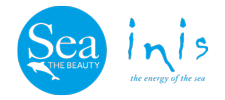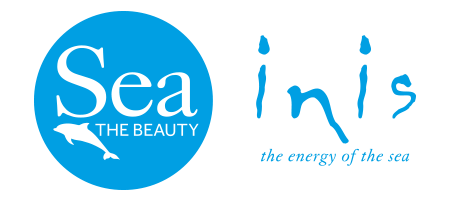There are seven species of sea turtle found in our waters, from the shallow seagrass beds of the Indian Ocean, to the colourful reefs of the Coral Triangle and the sandy beaches of the Eastern Pacific. Sea turtles spend the majority of their lives in the ocean - the only time they are really ashore is to bask or nest.
Sea turtles are a "keystone species", which means they are an important part of their environment and influence other species around them. Even at diminished population levels, sea turtles play an important role in ocean ecosystems by maintaining healthy seagrass beds and coral reefs, providing key habitat for other marine life, helping to balance marine food webs and facilitating nutrient cycling from water to land.
- Five Fun Facts -
- Jellyfish are one of their favourite foods - some turtles enjoy this tasty snack, and this also keeps the jellyfish population at bay.
- They are know as the oceans 'lawnmowers' - some enjoy a more plant-based diet and eat seagrass. By keeping this short it prevents the seagrass getting long and harming other creatures.
- Unlike other turtles, Sea Turtles can't retract their head and flippers into their shell - the shell is part of the turtle’s spine, which can make them more vulnerable to predators.
- They have an amazing sense of direction - Sea turtles can detect the Earth's magnetic field and they use it as a compass!
- They can hold their breath for 5 hours underwater - to accomplish this, they slow the heart rate way down in between heart beats in order to conserve oxygen.
Let's take a closer look at each species..
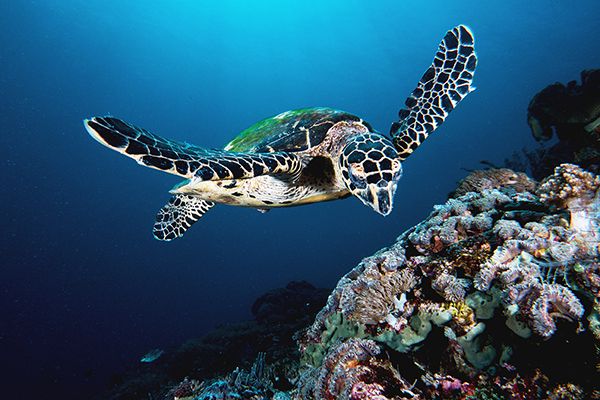
The Hawksbill Turtle is a critically endangered species, they are in immediate need of conservation. The turtles weigh between 90 and 150 pounds and have a length of about 30 to 35 inches. These animals are named so for their pointed and narrow beaks. They have unique patterned and coloured shells and are the only known reptile to be fluorescent!
Click here to learn more about the Hawksbill Turtle.
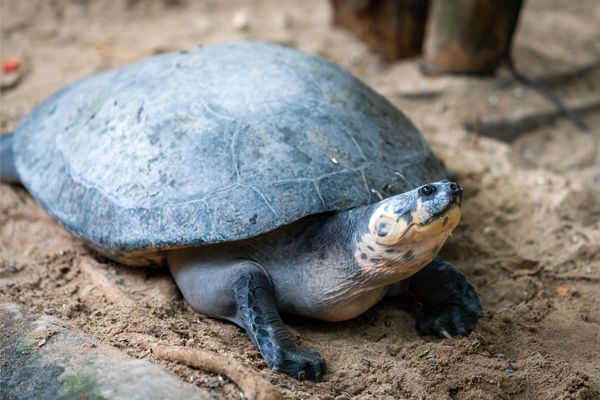
The Flatback Turtle is the smallest range of all marine turtle species. They are found in the coastal waters and sandy beaches of Australia. The flatbacks are called so because of their flat shell compared to other species. They are olive green to gray in colour and shell is very smooth and waxy, and can be easily damaged. These turtles are are omnivorous by nature.
Click here to learn more about the Flatback Turtle.
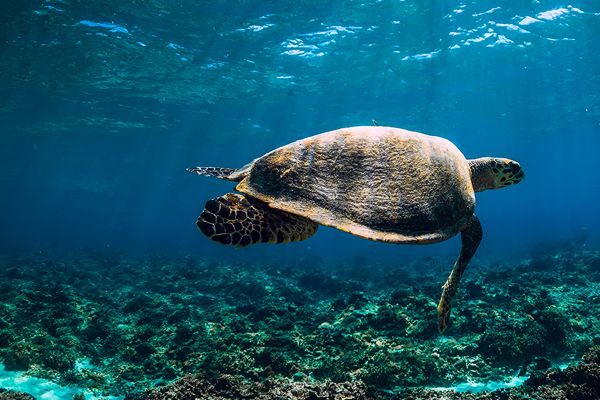
The Green Turtle is an endangered species. They are one of the biggest species of sea turtles on the Earth, weighing between 150 to 400 pounds and have a length ranging between 31 and 47 inches. Their name is derived from the greenish color of their fat. It is the only known herbivore species feeding on algae and seagrasses, found in the subtropical and tropical waters.
Click here to learn more about the Green Turtle.
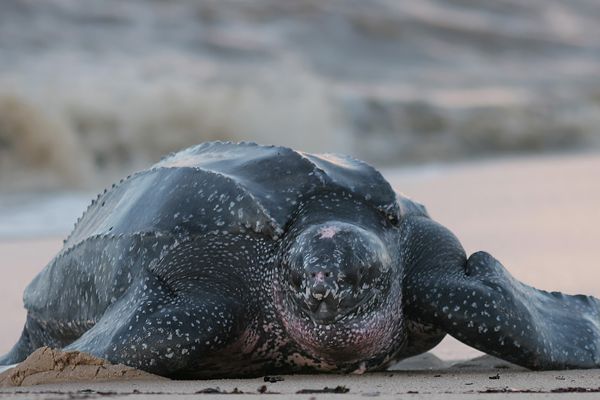
The Leatherback Turtle is named so for their hard, leather-like shells. They are the largest of all sea turtles weighing around 600 to 1,500 pounds and are about 55 to 63 inches long! Leatherbacks are known as the champions of sea turtles: diving the deepest, travelling the farthest and being the largest turtles. They migrate the most and cross both the Pacific and the Atlantic Oceans.
Click here to learn more about the Leatherback Turtle.
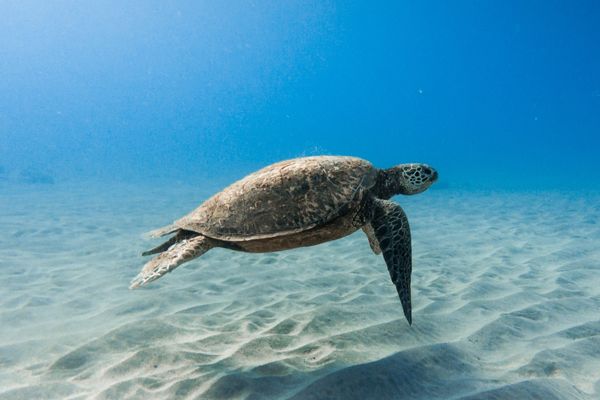
The Kemp's Ridley Turtle is the most endangered of all sea turtles. They are small in size with a length of about 8 to 11 inches and a weight of around 79 to 99 pounds. They have an oval shell that is olive-gray in colour. They feed near the seabed feeding on crabs, clams, mussels, and shrimp. They do also like to eat fish, sea urchins, squid and jellyfish. The Kemp's Ridely live in warm waters and their range includes the Atlantic Ocean and the Gulf of Mexico.
Click here to learn more about the Kemp's Ridley Turtle.
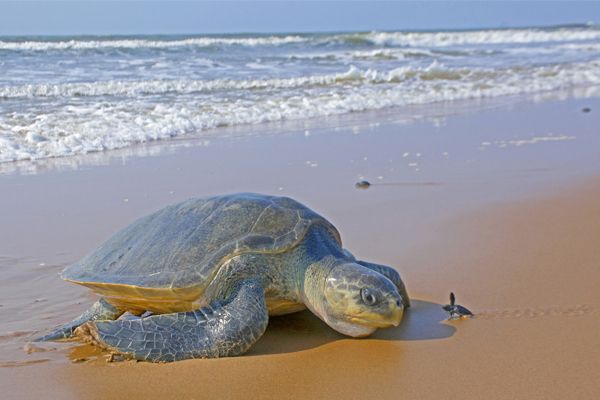
The Olive Ridley Turtle is also small in size - weighing anywhere between 75 to 110 pounds and has a length that varies between 24 and 28 inches. The turtle is named so for the olive green hue of its shell. They have powerful jaws that allow for an omnivore diet of crustaceans (such as shrimp & crabs), mollusks, tunicates, fish, crabs, and shrimp. The Olive Ridley inhabits tropical and subtropical waters of the Pacific, Indian and Atlantic Oceans.
Click here to learn more about the Olive Ridley Turtle.
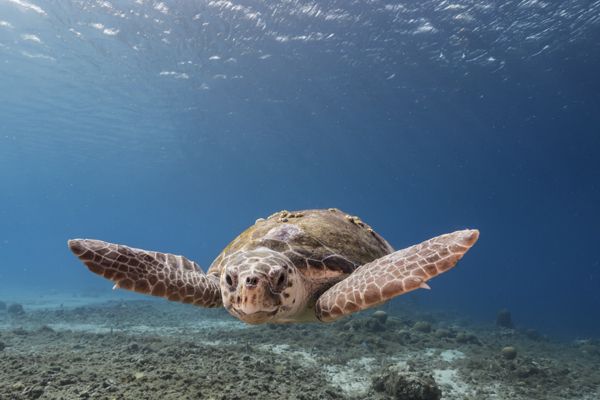
The Loggerhead Turtle is the only sea turtle species not listed as endangered and would be seen most often. The turtles receive their name from their large heads that support the powerful jaw muscles of the turtle. They are carnivorous and feed on shellfish that live on the bottom of the ocean - horseshoe crabs, clams, mussels, and other invertebrates. They are common along the Mediterranean coast where they can be observed on several beaches.
Click here to learn more about the Loggerhead Turtle.
Click here to read more about the importance of turtles in our oceans.
